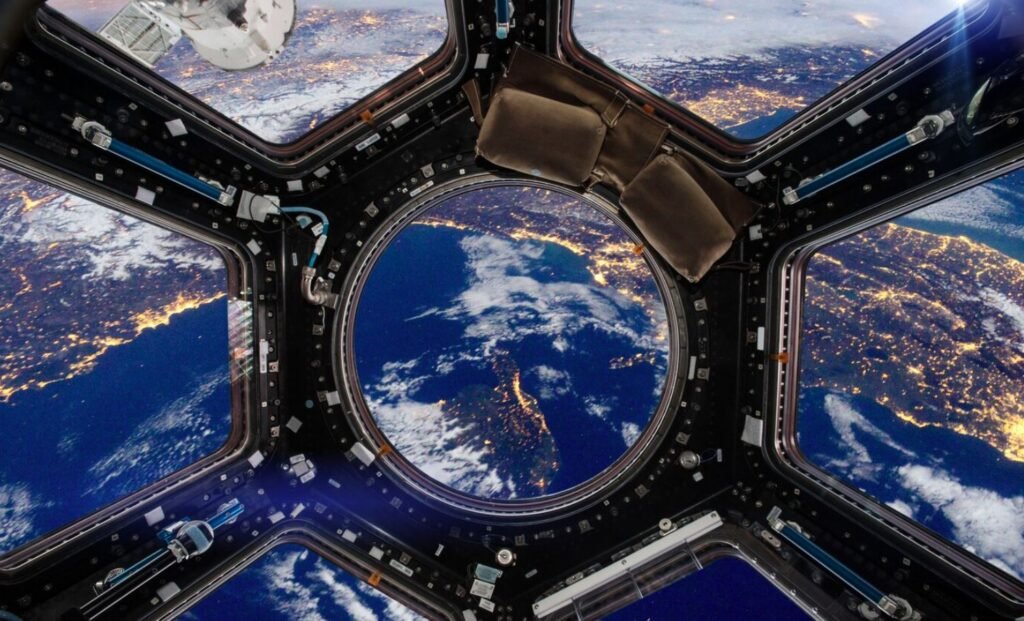Starlink?? Oh My God..Great Access

The internet has become an essential part of our lives, connecting us to the world in ways we couldn’t have imagined a few decades ago. Despite its critical importance, millions of people around the globe still lack reliable internet access. Enter Starlink, a revolutionary project by SpaceX, aiming to bridge this digital divide and provide high-speed internet to even the most remote corners of the Earth.
What is Starlink?
Starlink is a satellite internet constellation being constructed by SpaceX, the aerospace company founded by Elon Musk. The project involves deploying thousands of small satellites into low Earth orbit (LEO) to create a network capable of delivering high-speed internet to any location on the planet. Unlike traditional satellite internet services that rely on a few large satellites in geostationary orbit, Starlink’s constellation consists of numerous low-orbit satellites, reducing latency and improving internet speeds.
The Vision Behind Starlink
Elon Musk, the visionary founder of SpaceX, has long been driven by the goal of making life multi-planetary and improving life on Earth. It is a crucial part of this mission, designed to ensure that everyone, regardless of location, can access the internet. By creating a network of low Earth orbit (LEO) satellites, Starlink seeks to deliver fast, reliable, and affordable internet to areas where traditional broadband services are either unavailable or insufficient.
Technical Specifications and Innovations
Starlink leverages advanced technology to achieve its ambitious goals. Here are some key technical details:
- Satellite Design: Each Starlink satellite weighs approximately 260 kilograms and is equipped with multiple high-throughput antennas and a single solar array for power. The satellites are designed to autonomously avoid collisions using an onboard propulsion system and are built to deorbit themselves at the end of their lifecycle, mitigating space debris concerns.
- Launch and Deployment: SpaceX uses its Falcon 9 rockets to launch batches of 60 satellites at a time. The company plans to deploy tens of thousands of satellites to achieve global coverage. The deployment strategy involves placing satellites in different orbital “shells” to create a comprehensive network.
- Phased Array Antennas: The user terminals, often referred to as “Starlink dishes,” utilize phased array technology to electronically steer their beams towards the best satellite in view. This allows for rapid adjustments and maintains a stable connection even as satellites move across the sky.
- Laser Links: Future iterations of Starlink satellites will include laser inter-satellite links, enabling direct communication between satellites without relying on ground stations. This will enhance network efficiency and extend coverage to polar regions.

Real-World Applications
Starlink’s impact extends beyond just providing internet access. Here are some potential real-world applications:
- Education: In remote and underserved areas, students often lack access to educational resources available online. It can bridge this gap, providing students with the same opportunities as their urban counterparts.
- Healthcare: Telemedicine has become increasingly important, especially in rural areas with limited access to healthcare facilities. It enables remote consultations, diagnostic services, and even real-time surgery guidance, improving healthcare outcomes.
- Disaster Response: In the aftermath of natural disasters, traditional communication infrastructure is often damaged or destroyed. It can quickly restore connectivity, aiding in disaster relief efforts and coordination.
- Agriculture: Farmers in remote areas can benefit from real-time data on weather conditions, market prices, and advanced agricultural techniques. This information can optimize farming practices and increase productivity.
- Business and Commerce: Small businesses in rural areas can access global markets, participate in e-commerce, and improve their operations with reliable internet. This can drive economic growth and create new job opportunities.
How Does Starlink Work?
This system works by using a vast network of small satellites that communicate with ground stations and user terminals. Here’s a breakdown of how it s:
- Satellites: Thousands of these satellites are launched into low Earth orbit, forming a mesh network around the planet.
- Ground Stations: These stations, also known as gateways, are strategically placed around the world to connect the satellite network to the internet backbone.
- User Terminals: Customers receive internet signals through user terminals, which are small, dish-like devices. These terminals are easy to set up and align themselves with the satellites to ensure a stable connection.
The combination of these three components allows Starlink to deliver high-speed, low-latency internet to users, even in areas where traditional broadband services are unavailable or unreliable.

Economic and Social Impacts
Starlink has the potential to significantly impact global economies and societies. By providing universal internet access, it can:
- Boost Economic Growth: Access to the internet can drive economic development by enabling businesses to reach new markets, fostering innovation, and creating jobs. Small and medium-sized enterprises (SMEs) can particularly benefit from the increased connectivity.
- Reduce Inequality: Starlink can help bridge the digital divide, providing equal opportunities for education, healthcare, and employment regardless of geographic location. This can reduce socio-economic disparities and improve overall quality of life.
- Enhance Global Communication: By connecting remote and underserved regions, It can facilitate better communication and collaboration across borders. This can promote cultural exchange, understanding, and cooperation on a global scale.
- Support Scientific Research: Reliable internet access is crucial for scientific research and data sharing. Starlink can enable researchers in remote areas to collaborate with peers worldwide, advancing knowledge and innovation.
Benefits of Starlink
- Global Coverage: It aims to provide internet access to every corner of the globe, including rural and underserved areas where traditional ISPs do not reach.
- High Speed and Low Latency: By operating in low Earth orbit, Starlink satellites reduce the distance data has to travel, resulting in faster internet speeds and lower latency compared to traditional satellite internet.
- Quick Setup: The user terminals are designed for easy installation, allowing users to get online quickly without the need for professional setup.
- Scalability: As more satellites are launched, the network’s capacity and reliability continue to improve, accommodating more users and increasing service quality.

Challenges and Considerations
- Cost: Building and maintaining a satellite constellation is expensive. While SpaceX aims to make Starlink affordable, the initial setup cost for users, including the user terminal, can be high.
- Space Debris: The proliferation of satellites in low Earth orbit raises concerns about space debris and the potential for collisions. SpaceX is working on mitigating these risks by designing satellites that can deorbit themselves at the end of their lifecycle.
- Regulatory Hurdles: Different countries have varying regulations regarding satellite communications, which can complicate the deployment and operation of this network.
- Astronomical Concerns: The large number of satellites in low Earth orbit has raised concerns among astronomers about light pollution and interference with astronomical observations. SpaceX is working on solutions, such as darkening satellites and improving tracking to mitigate these issues.
- Environmental Impact: The production, launch, and operation of thousands of satellites have environmental implications. SpaceX must address these concerns by adopting sustainable practices and technologies.
- Market Competition: Starlink is not the only player in the satellite internet market. Competitors like Amazon’s Project Kuiper and OneWeb are also developing similar constellations. This competition could drive innovation but also presents market challenges.
The Future of Starlink
It has already made significant strides, with thousands of satellites launched and tens of thousands of users worldwide. Looking ahead, the project aims to expand its coverage, increase network capacity, and lower costs. Innovations such as inter-satellite links, which allow satellites to communicate with each other without relying on ground stations, will further enhance the network’s efficiency and reliability.
As the technology matures, this could play a crucial role in closing the global digital divide, enabling economic growth, education, and improved quality of life for millions of people.
FAQs About Starlink
Q: How much does Starlink cost?
A: As of now, the Starlink Kit, which includes a user terminal, mounting tripod, and Wi-Fi router, costs around $499. The monthly subscription fee for the internet service is approximately $99. Prices may vary by region.
Q: What speeds can I expect from Starlink?
A: Users can typically expect download speeds between 50 Mbps and 150 Mbps, with latency between 20 ms and 40 ms. Speeds may vary depending on location and network congestion.
Q: How do I set up Starlink?
A: Setting up Starlink is straightforward. After receiving the Starlink Kit, users need to install the dish in a location with a clear view of the sky, connect it to the power source, and follow the setup instructions via the Starlink.
Q: Is Starlink available worldwide?
A: Starlink is currently available in select regions, primarily in North America, Europe, and parts of Australia. The service is gradually expanding, with the goal of achieving global coverage by the end of 2024.
Q: Can I use Starlink for gaming and video calls?
A: Yes, Starlink’s low latency and high speeds make it suitable for online gaming, video calls, and other activities that require stable and fast internet connections.
Q: How does weather affect Starlink’s performance?
A: Heavy rain, snow, or thick clouds can potentially impact Starlink’s signal strength, leading to temporary reductions in speed or interruptions. However, the system is designed to handle typical weather conditions, and performance usually remains stable.
Q: What happens if a Starlink satellite fails?
A: If a Starlink satellite fails, it is designed to deorbit safely, burning up in the Earth’s atmosphere. The large number of satellites in the constellation ensures that the network can continue operating without significant disruptions.
Q: How does Starlink compare to traditional broadband?
A: Starlink offers comparable speeds and lower latency than many traditional broadband services, especially in rural and remote areas where high-speed internet options are limited or nonexistent.
Conclusion
Starlink represents a transformative leap in global internet connectivity, bringing high-speed internet to previously unreachable areas and enhancing the quality of life for countless individuals. While there are challenges to overcome, the potential benefits of Starlink are immense, making it a key player in the future of global communications. As the project continues to grow and evolve, we can look forward to a world where everyone, regardless of location, has access to reliable, high-speed internet.
By bridging the digital divide, Starlink is not just connecting people to the internet; it’s connecting them to opportunities, education, healthcare, and a wealth of information, paving the way for a more connected and equitable world.
Final Thoughts
Starlink is more than just a technological marvel; it is a beacon of hope for millions who have been left behind in the digital age. As SpaceX continues to innovate and expand this ambitious project, the dream of universal internet access becomes ever closer to reality. In a world where connectivity is key to progress, Starlink stands as a testament to human ingenuity and the relentless pursuit of a better future.
READ MORE OUR TOP RANKING ARTICLES :
- What Is a Debt Warrant, and Why You Should Care : Top 5 secrets
- 7 Best Personal Injury Lawyer Memphis beyourvoice.com
- 12 Best Personal Injury Lawyer Kansas City langdonemison.com
- AutoTempest Car Dealer : 1 of The best in USA
- Personal Injury Attorney : U.S.A Best 20 Solutions
- Experian Freeze Credit Report : 31% Americans Don’t Know Their credit score
- Insurance Policies : Everyone Should Acclaim 5 policies
- Student Loan Relief assured for Borrower’s Debt announced by President Biden : 2023
- Personal Loan Basics Assurance : Authentic Article with 5 Points
- Better Mortgage Review
- President Biden Announces Student Loan Relief for Borrowers Who Need It Mos
- How To Choose the Right Long-Term Savings Account
- Mezzanine Financing: Best 3 ways to know
- Personal Loan Basics
- What is 5 Interest in Bank?
Visit Our WEBSITE : https://loaninsurancefinance.com/
Click Here : How To Choose the Right Long-Term Savings Account
USA official website : https://www.usa.gov/

